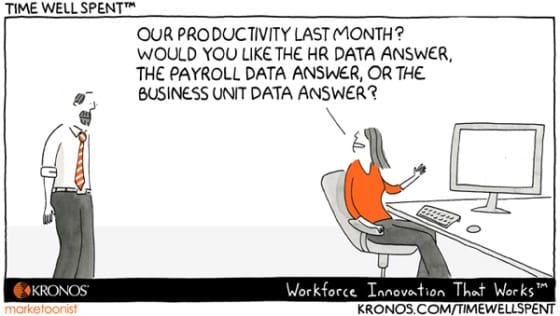Definitions Bring Consistent Answers – Friday Distraction
When I was younger, I would ask my mother questions and if she didn’t give me the answers I was looking for, I’d go ask my father. I’m sure that I’m not alone in using that tactic.
When I started in human resources, I discovered that employees sometimes do the same thing. They ask one supervisor and if they didn’t get the answers they were looking for, they’d ask another supervisor. As you can imagine, it created challenges. One supervisor would say “yes” and the other would say “no.” At some point, the supervisors and the employee would end up in HR trying to resolve the matter.
I was reminded of those different responses when I saw this Time Well Spent from our friends at Kronos. When we ask for information, it’s possible the answers can be different depending upon who we’re talking to. And that’s not what we want. Especially when it comes to data.
But there are ways to ensure that people get the right information:
- Define the request. In the cartoon, the request is for productivity data. Well, how is productivity defined in the organization? That will help the person requesting the data make the proper request. Even if they don’t know how the data is extrapolated, they know what they’re trying to accomplish.
- Understand the use. Requests for data and information should not be a one-way conversation. Regardless of how the request is made, the person supplying the information should understand how the data is being used, so they provide the proper info.
- Don’t make assumptions. Once the data is received, check it for accuracy. Make sure the requestor knows how to read and use the information. Often the process of getting the data is the easy part. It’s making sense of the data that’s the hard part.
When we ask the right questions, we get the right data and information to make good decisions.
0